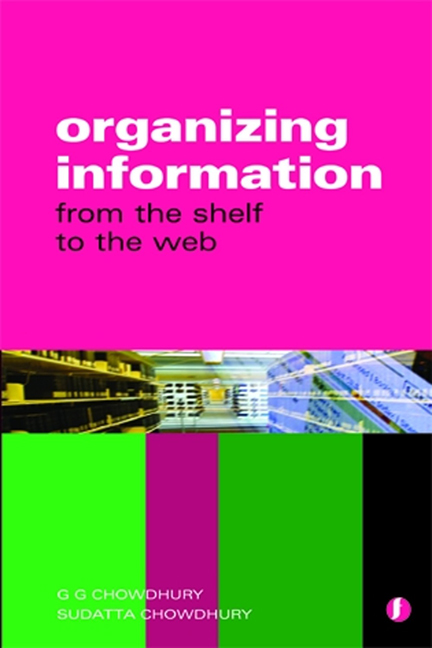Book contents
- Frontmatter
- Dedication
- Contents
- Preface
- Glossary
- 1 Organizing information: what it means
- 2 Information organization in non-library environments
- 3 Cataloguing
- 4 Bibliographic formats: MARC 21 and others
- 5 Library classification
- 6 Subject heading lists and thesauri in information organization
- 7 Organization of internet information resources
- 8 Metadata
- 9 Markup languages
- 10 Ontology
- 11 Information architecture
- 12 The semantic web
- 13 Information organization: issues and trends
- Index
8 - Metadata
Published online by Cambridge University Press: 10 September 2022
- Frontmatter
- Dedication
- Contents
- Preface
- Glossary
- 1 Organizing information: what it means
- 2 Information organization in non-library environments
- 3 Cataloguing
- 4 Bibliographic formats: MARC 21 and others
- 5 Library classification
- 6 Subject heading lists and thesauri in information organization
- 7 Organization of internet information resources
- 8 Metadata
- 9 Markup languages
- 10 Ontology
- 11 Information architecture
- 12 The semantic web
- 13 Information organization: issues and trends
- Index
Summary
Introduction
Libraries have long been using mechanisms for creating ‘surrogates’ of bibliographic information resources that are used for resource discovery and information management; these are now termed ‘metadata’. Library catalogues and bibliographies are good examples of metadata records. In order to create such metadata, libraries have prepared and adopted various standards like AACR2, MARC 21, etc. However, there is more to metadata than simple catalogue records or bibliographies. The term has long been used in the database world, and recently became popular in the information world in the context of handling and managing electronic information resources. In the context of the web, metadata play a number of key roles, ranging from resource discovery to information access, retrieval, sharing, processing, re-use, etc. Several metadata standards have been developed for handling specific types of information resources. This chapter begins with a discussion of the concept of metadata, its various types and its role in the organization and management of electronic information. It then analyses the basic needs and attributes required for metadata standards; this is followed by a description of the features and characteristics of certain metadata standards designed with a specific purpose in mind: the DCMI (Dublin Core Metadata Initiative) for bibliographic records, eGMS (e-Goverment Metadata Standard) for electronic government records, and ISAD(G) (General International Standard Archival Description) and EAD (Encoded Archival Description) for archival records. The chapter ends with a discussion of the management issues related to metadata.
Metadata: what?
Metadata have been in existence since the first library catalogues were established over 2000 years ago in Alexandria in ancient Egypt. However, the term ‘metadata’ did not appear until the 1960s; it became established in the field of database management in the 1970s, and began to appear in the library and information science literature in the mid-1990s (Haynes, 2004; Lange and Winkler, 1997; Schwartz, 2001; Smiraglia, 2005; Vellucci, 1998).
Within a very short period of time, metadata became an important area of research and gave rise to many publications, including the Annual Review of Information Science and Technology (Vellucci, 1998) and a volume of the International Yearbook of Library and Information Management (Gorman and Dorner, 2004). Vellucci (1998) notes that the term transcends boundaries among various stakeholders in the internet arena, and provides a common vocabulary to describe a variety of data structures.
- Type
- Chapter
- Information
- Organizing InformationFrom the Shelf to the Web, pp. 139 - 156Publisher: FacetPrint publication year: 2013



